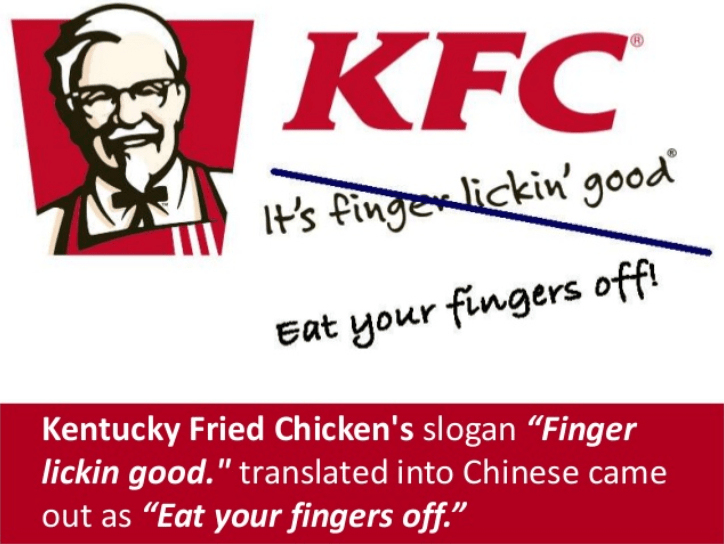From Pampers to Pizzas: Cultural Sensitivity in Chinese Marketing Translations
China's economic strength and its importance in international trade make it a crucial partner for businesses worldwide. However, its unique language and culture pose significant challenges to Western companies, and a lack of awareness can lead to misunderstandings that range from mild confusion to severe business setbacks. This article aims to shed light on the importance of understanding Chinese culture in relation to translation and provides actionable tips for fostering effective cross-cultural communication.
Real-life Case Studies
To illuminate the practical application of cultural sensitivity in marketing translations, let's examine real-life case studies where companies have either succeeded or stumbled in China due to their approach to cross-cultural communication:
Successes in Cultural Awareness
Procter & Gamble
P&G marketed its product based on their study which involved 6,800 home visits, and more than 1,000 babies throughout eight cities in China, revealing that those using disposable diapers instead of cloth diapers fell asleep 30% faster and gained an additional 30 minutes of sleep nightly, aiding cognitive development. Recognizing the importance of academic achievement in Chinese culture, this culturally attuned strategy contributed to the success of Pampers in China.

Daimler (Mercedes-Benz)
Having entered the Chinese market in 2005, Daimler, Mercedes-Benz's parent company, has since attributed its success in China to a robust localization strategy, with research and development being a key part of its localization efforts. To cater to Chinese preferences, Daimler established the Mercedes-Benz Research & Development China Center, its biggest outside Germany. The company also engages in social responsibility initiatives, including support for youth education and environmental protection activities.

Challenges Resulting from Cultural Missteps
Kentucky Fried Chicken
In 1987, Kentucky Fried Chicken became the first fast-food chain to open a restaurant in China. Today, it has thousands of stores in 1,800 cities across China, generating billions of dollars in revenue. However, KFC's entry into the Chinese market was far from perfect. The translation of their famous slogan, "Finger-lickin' good," was mistranslated as "Eat your fingers off." Since then, KFC has wisely adapted the slogan to the more culturally appropriate "Good to the last bite."

Dolce & Gabbana
In a notable misstep, Dolce & Gabbana faced backlash in China due to a controversial advertising campaign. The campaign depicted a Chinese model struggling to eat a pizza with chopsticks, perpetuating stereotypes and offending the Chinese audience. The incident led to a significant decline in brand reputation and sales in China, emphasizing the high stakes of cultural insensitivity.

These examples underscore the importance of linguistic precision and cultural adaptation in Chinese business communication. Whether it's adapting marketing strategies, product presentations, or choosing the right communication channels, a culturally informed perspective is crucial for navigating the nuances of the Chinese market. In the next section, as we delve deeper into the tips for effective Chinese translation services, we'll explore strategies to overcome these language challenges and foster successful cross-cultural communication.
Tips for Effective Chinese Translations
Language Localization
Language localization goes beyond mere translation; it involves tailoring the content to resonate with the specific cultural and linguistic nuances of the target audience. In Chinese culture, grandiosity and the abundant use of impactful adjectives help to shape perceptions of a product or service; recognizing and incorporating these elements is crucial when crafting effective marketing content in China. Therefore, there is a need to “tone up” content when translating marketing content from English to Chinese, and conversely, “tone down” content when translating from Chinese to English, resulting in a more engaging and culturally sensitive communication experience.
Furthermore, the use of Chinese idioms—or 成语 (chéngyǔ) and culturally relevant references will help to make your message more familiar and relatable. Embracing these linguistic subtleties not only bridges the communication gap but also demonstrates a genuine understanding and appreciation of Chinese culture.
Interpreting Meetings
In meetings, allow the most senior person to lead discussions. Avoid direct contradictions or confrontations, as this will cause public embarrassment or “loss of face” (面子/ Miànzi). Navigating these cultural conventions with finesse fosters a positive atmosphere conducive to successful collaboration. Furthermore, understanding the intricacies of Chinese customs, etiquette, and business traditions is foundational to successful and respectful communication. For instance, the nodding of the head might not always indicate agreement; it can also be a sign of attentiveness or simply a cultural gesture aimed at avoiding public disagreement, and therefore helping to "save face."
Conclusion
Ultimately, as businesses strive to make their mark in the Chinese market, recognizing and respecting cultural subtleties isn't just a strategic choice; it's the key to unlocking sustainable success. In the ever-evolving landscape of international trade, a thoughtful and culturally informed approach to Chinese marketing translation is the linchpin for forging successful communications and thriving in one of the world's most dynamic economic environments.
About CTS Chinese Translation Services
Drawing insights from the experiences of major companies in the Chinese market, we understand the importance of cultural sensitivity in business. Beyond translations, we offer a comprehensive understanding of Chinese culture, supporting businesses to connect authentically with the vibrant Chinese market. Contact us by phone or email to learn more about how we help American and Chinese companies succeed in each other’s markets, one word at a time.